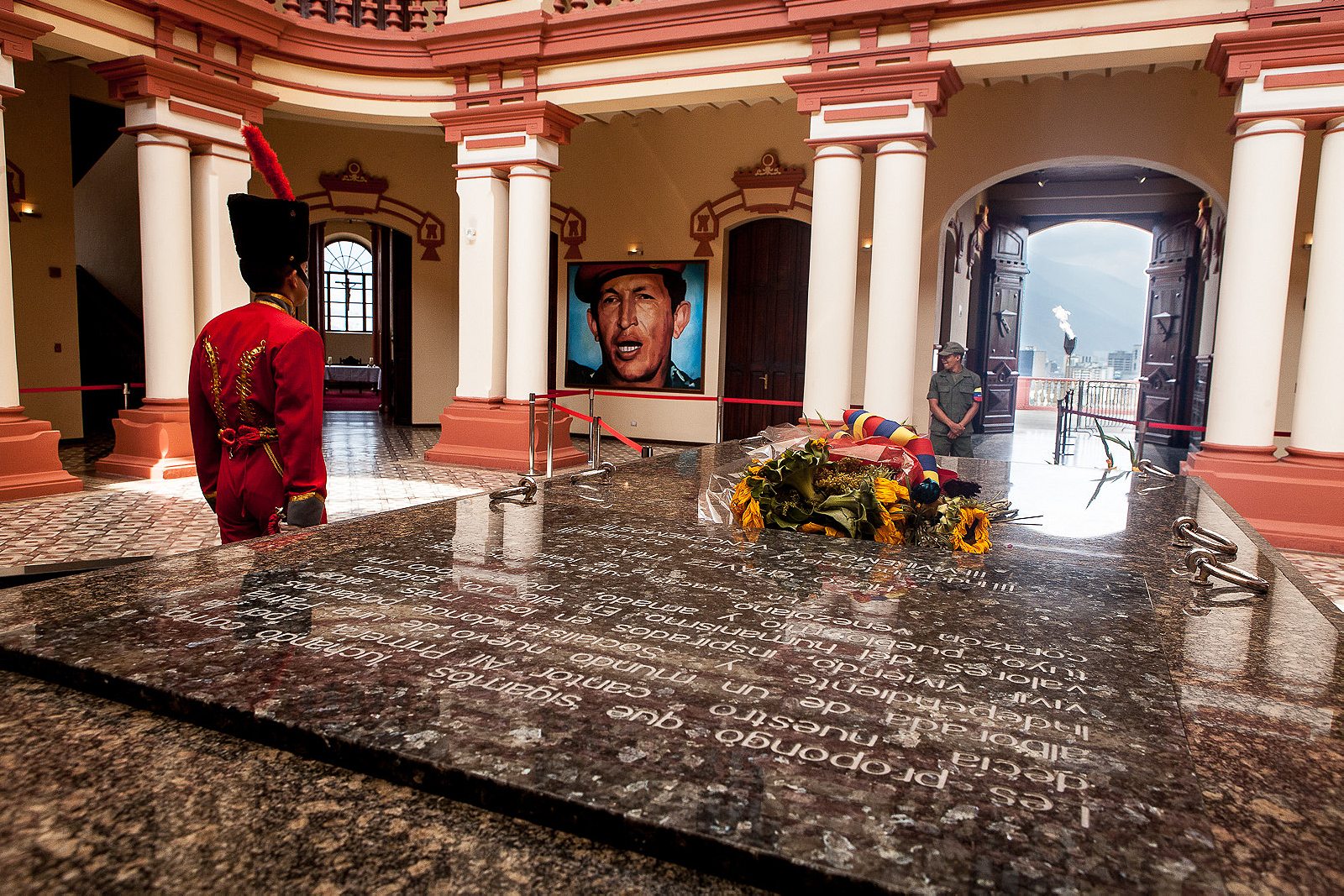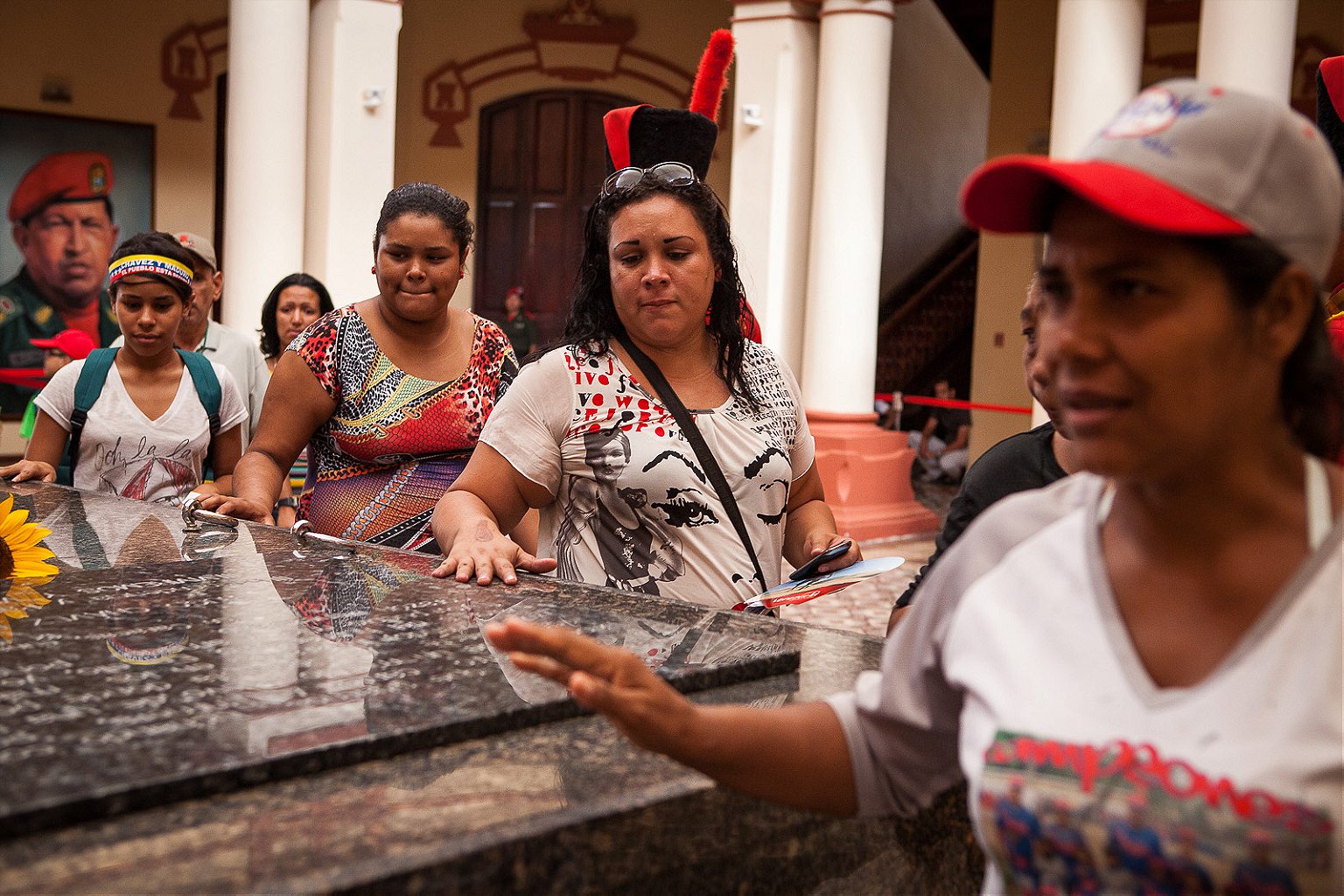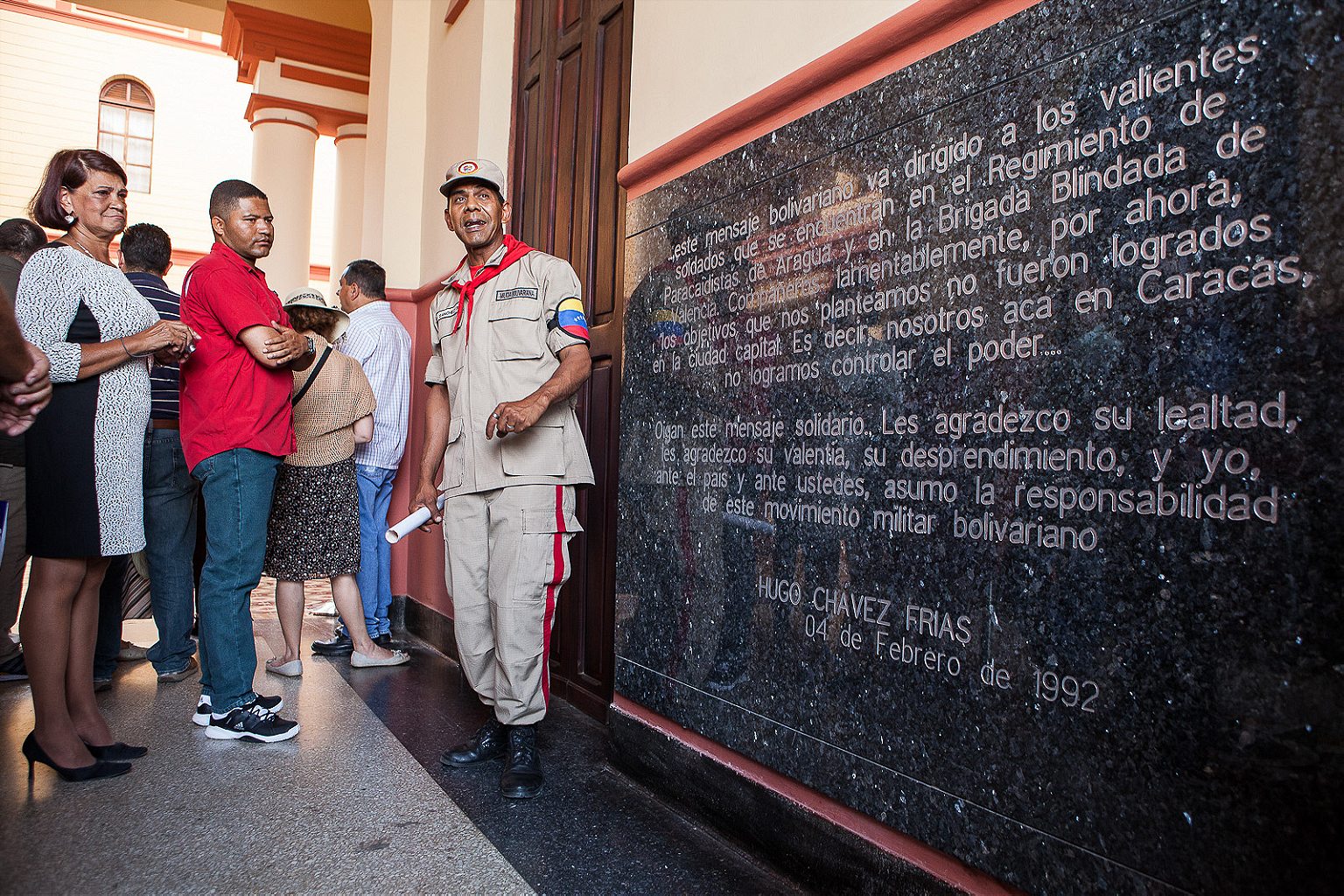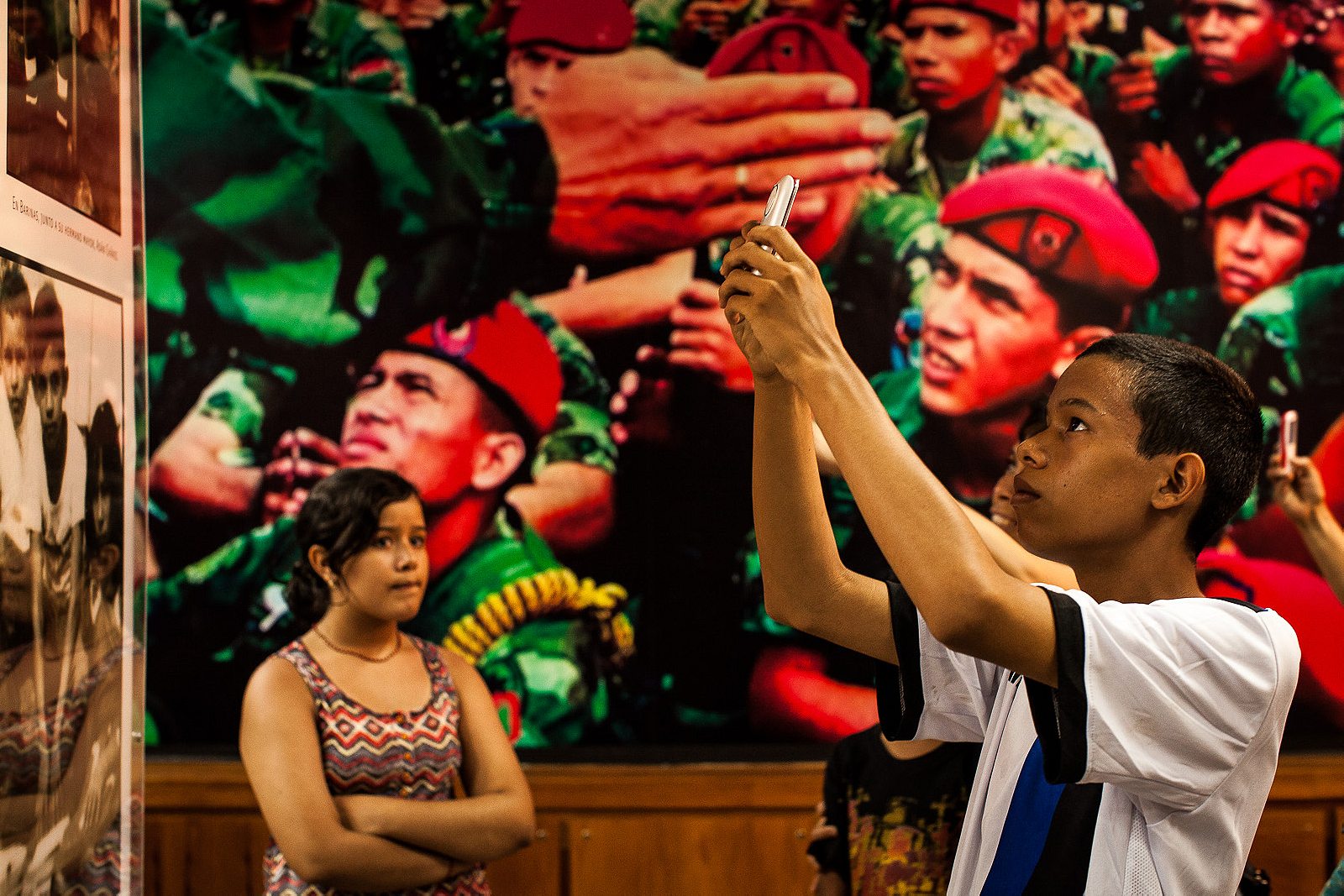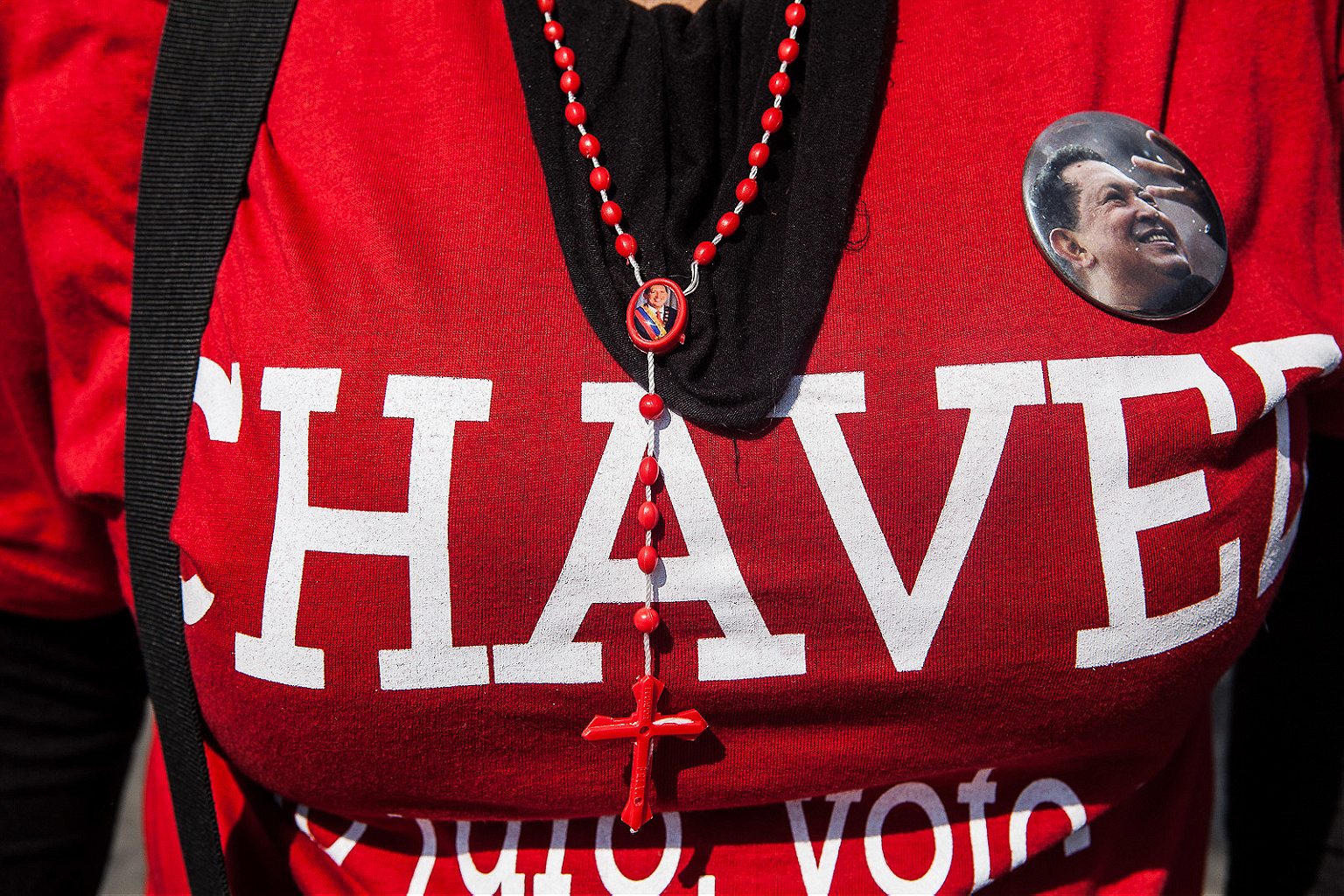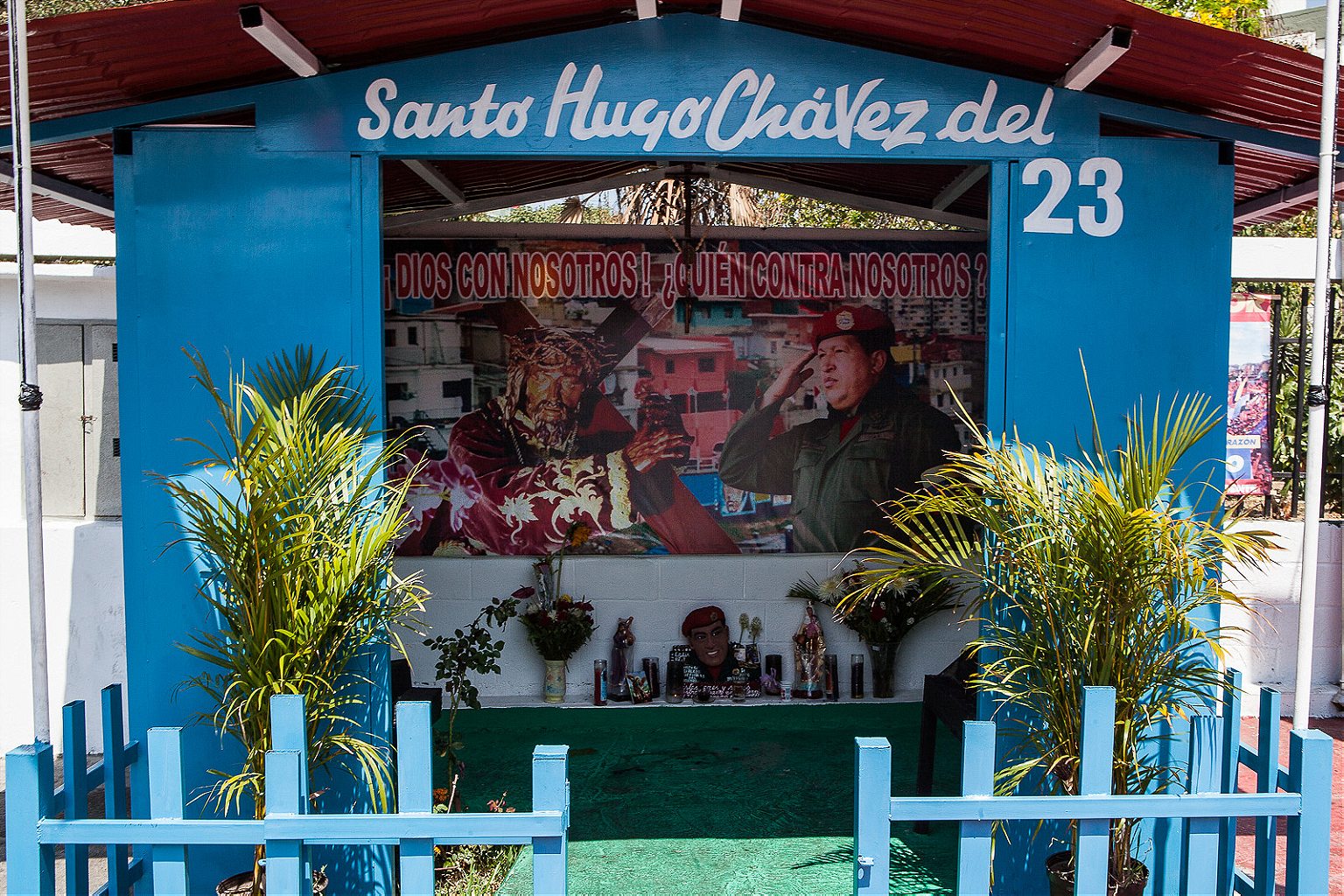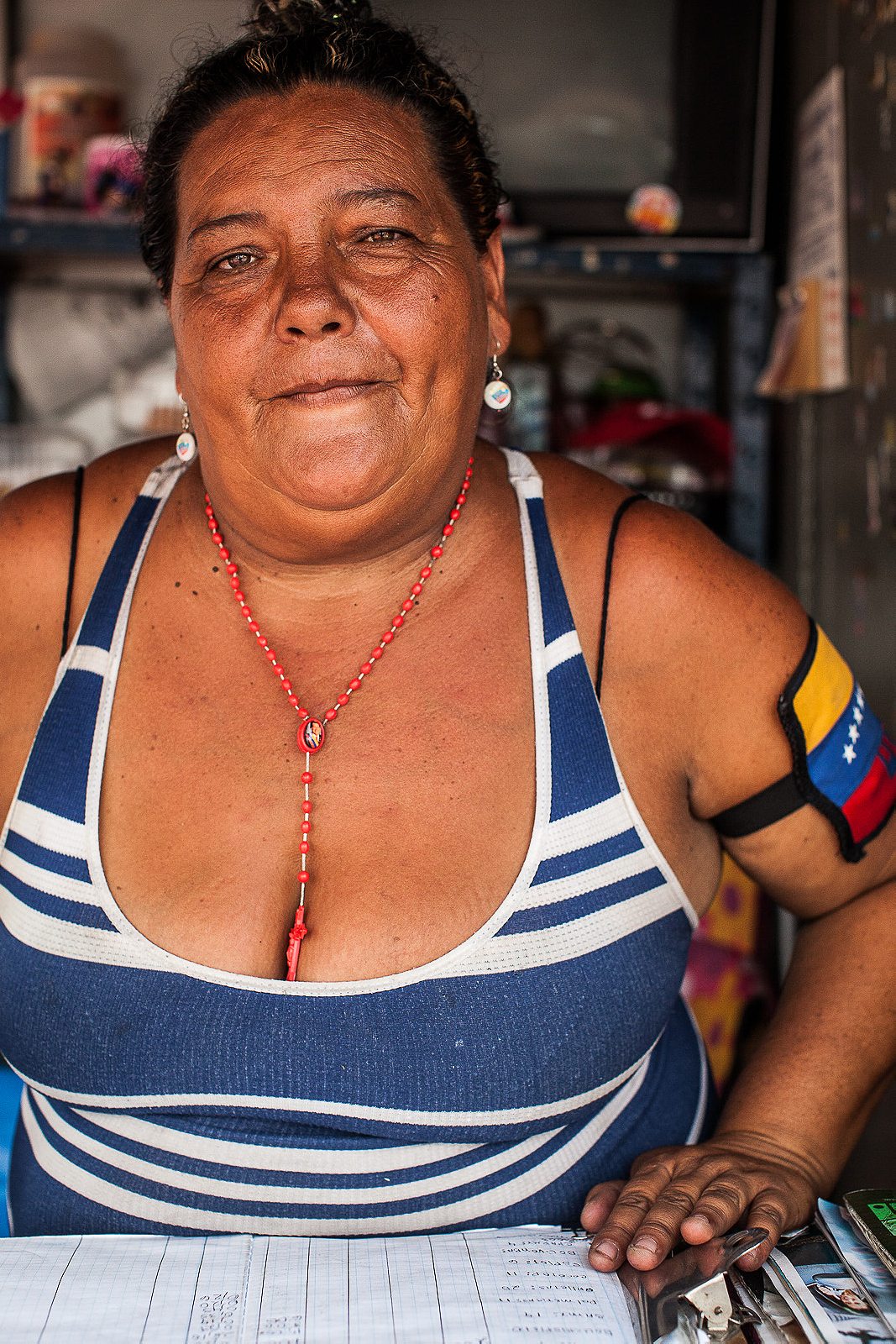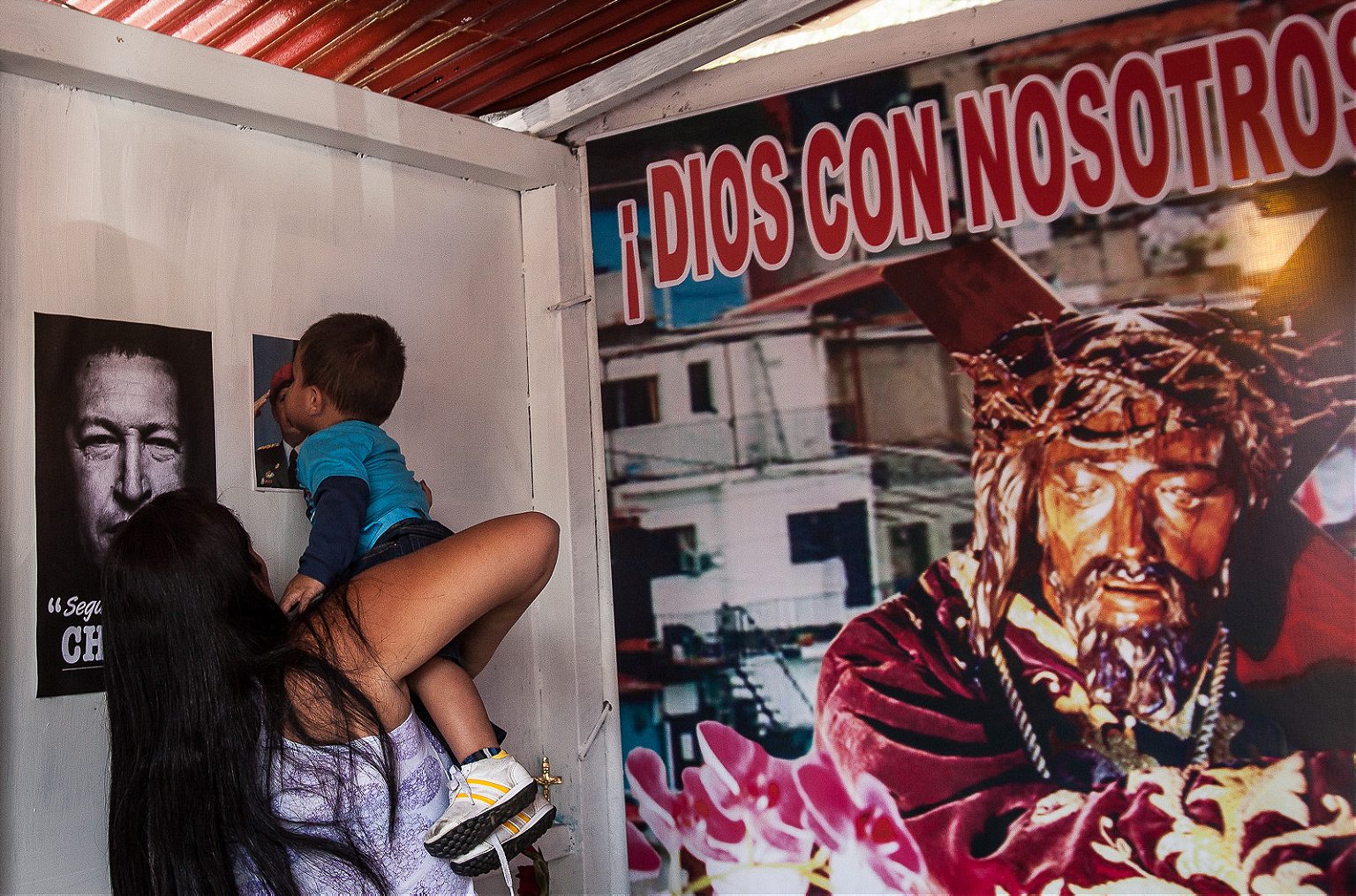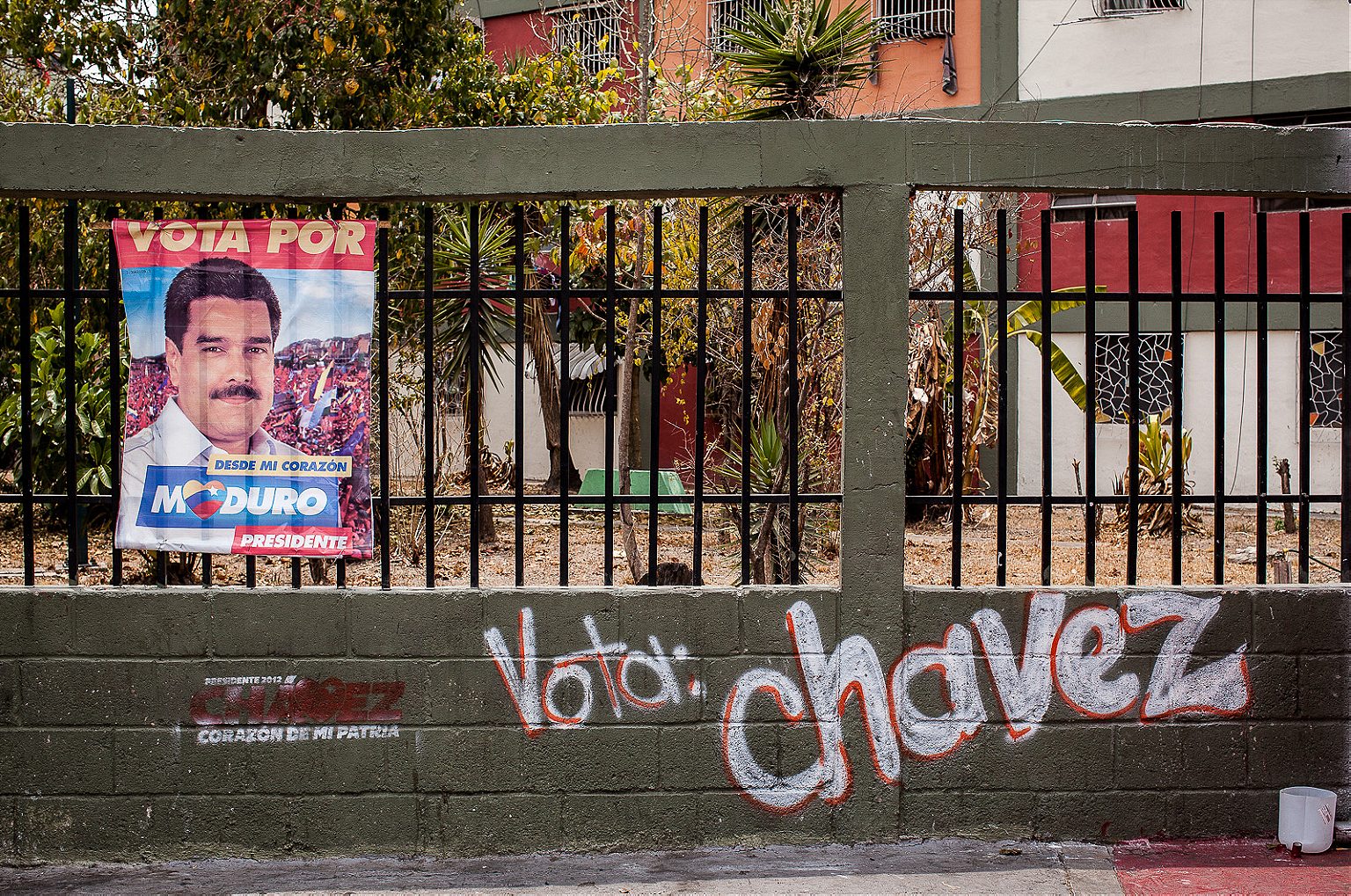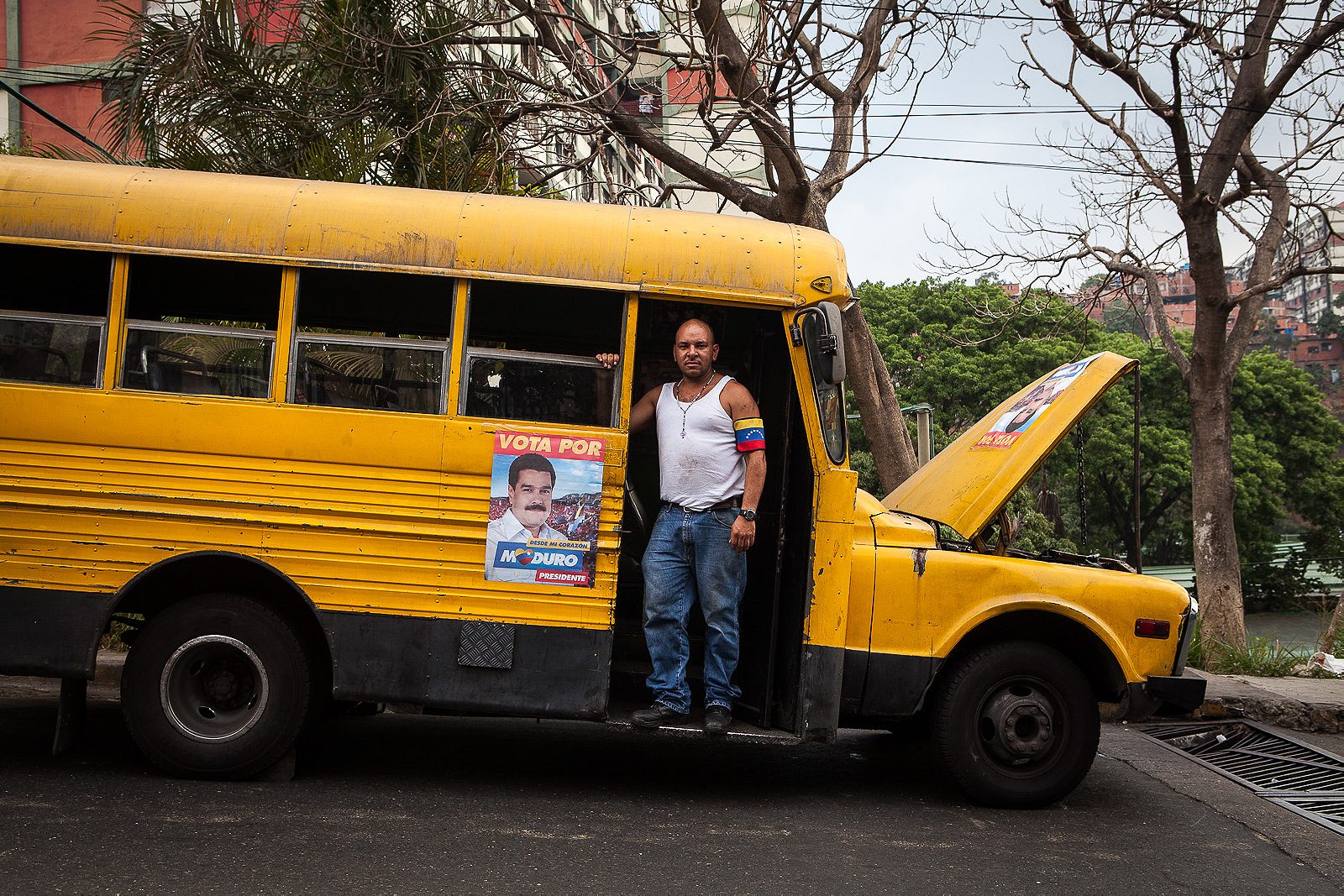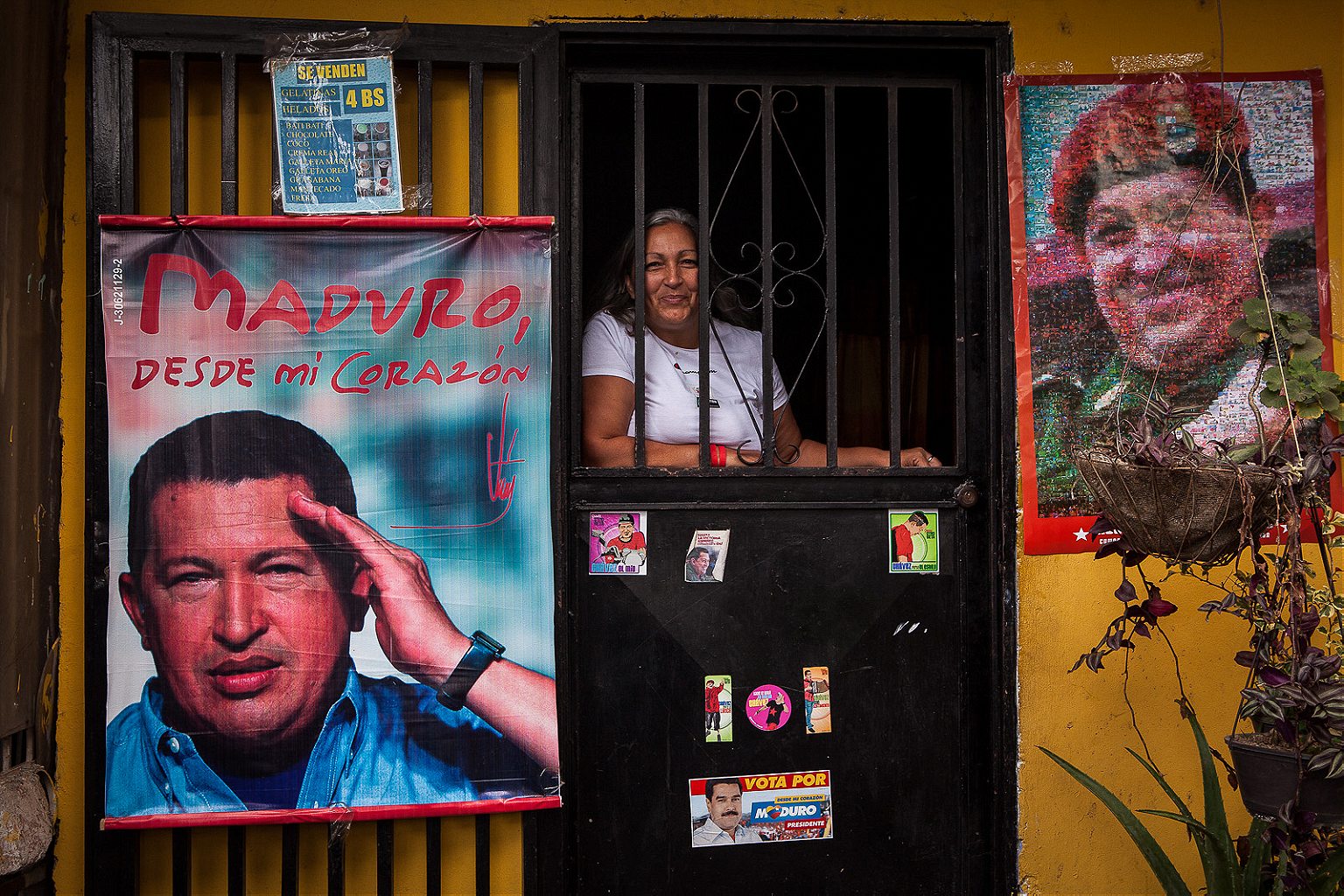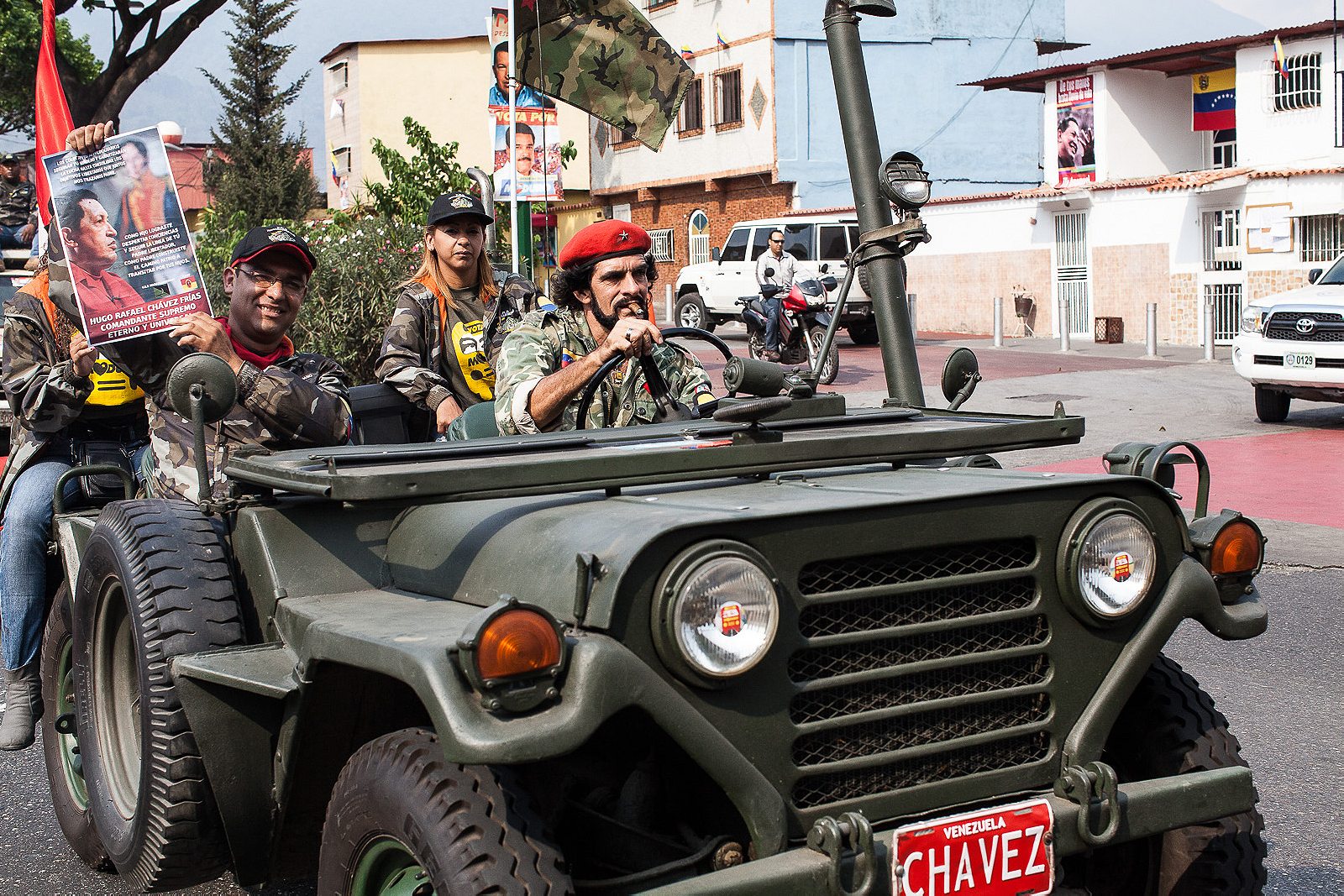Photographer Eduardo Leal has a violent run-in with an armed pro-Chavez militia.
The 23 de Enero district of Caracas is named after the January 23, 1958 coup that brought down then-dictator Marcos Pérez Jiménez, so it’s fitting that the ramshackle hillside neighborhood has always mixed politics with aggression. Hugo Chávez launched his failed 1992 coup from the 4F barracks here, and when he died this March 5, his remains were brought to the barracks, where red-eyed supporters now come to visit his tomb in a converted “Museum of the Bolivarian Revolution”.
The neighborhood seemed an ideal location to document the cult of Chávez for Roads & Kingdoms ahead of Venezuela’s April 14 election between acting president (and hand-picked Chavez heir) Nicolás Maduro and underdog opposition leader Henrique Capriles. But if neighborhoods like 23 de Enero see themselves as ardent defenders of Chavez’s revolution—they are desperately poor and Chavez’s government has given them both bread and pride—they also have to live with another real legacy of Chavismo: violence. It’s not just the street crime and murder, it’s also the politicized militias that have formed around the vague goal of “defending the revolution”. These fervent Chavistas range from unarmed community workers to paramilitary gangs. In this pivotal moment for Venezuela, the hint of violence is never far from the surface.

That violence nearly caught me full-force after days of reporting there. I was trying to get deeper inside the neighborhood, walk the small alleys and go up the hills, for a better sense of life there. I talked with Elisabete Torres, the guardian of an ad-hoc shrine to Chávez that residents put up just after his death. She introduced me to a woman willing to show me around the neighborhood. So we went up the hill. I took some photographs and everything seemed normal, but she said we had to ask for permission from some of the people that control the area.
In my experience in Caracas, usually the people you have to get permission from are with the Consejo Comunal (people like Morela, whom I followed during the last election). But this time, instead of a woman, it was a group, mostly kids around 16 years old, heavily armed with machine guns and pistols. This alone was not a shock to me; it’s quite normal in South America slums. The weird thing was that it seemed there were actually military men mixed in with the group. I asked one of them, who was wearing the same uniform and red beret as Chávez always wore, if he was in fact military. He said yes.
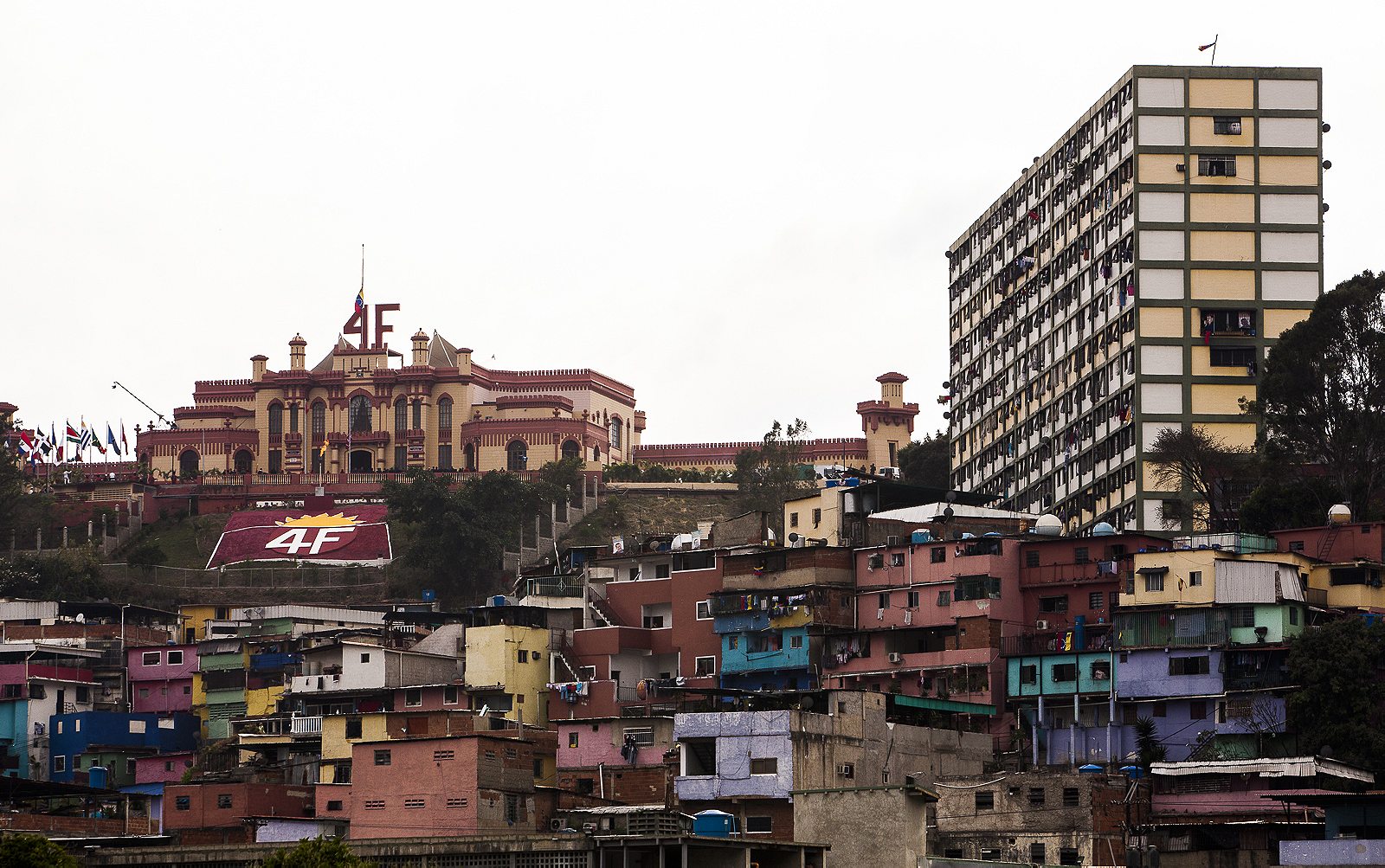
At that point everything was still peaceful, and in the back of my mind I was actually thinking that I could possibly make a great photostory out of the group. It was then that another guy—presumably the boss—came shouting at me and some of the militiamen. One of them separated me from the woman who was guiding me, took me to a corner and started stripping my bag. They emptied everything and checked all the equipment and my clothes. I was getting very nervous: the guy searching my bag told me he was taking all my memory cards with the photos on them but that he would give me my camera. He explained to me that I was in a “war zone” and that they are protecting the revolution. He said that my photos could damage the revolution and they had to avoid that before the election. I was nervous but happy to have the camera with me, the guy didn’t even look at the money I had in the pocket.
But suddenly the boss came back and sent the guy with the cards away. Another man came up and raised his gun at me. I was surrounded now by four guys, all of them armed. The boss slapped me if the face and kicked me a few times in my legs and said I was really lucky that he didn’t kill me straight away. After a few more hits he released me and let me run for my life.
Partway down the hill I found the woman who had been my guide, sitting on the steps. She was really nervous and saying that we need to run because the militia could change their mind. I went back to the chapel and told Torres, the guardian of the chapel, what had happened. She was extremely upset, saying that they can’t do those kind of things, especially not to a foreigner, that it would give the revolution a bad name. (Some contradiction: the militia was worried that my photographs would give the revolution a bad reputation, so they attacked me). She apologize and said that she would try to do whatever she could to get my cards back. A military unit that was near the chapel also heard the story and seemed concerned, but that could have been a front, since I had clearly seen some military with the militia. I left 23 de Enero still shaking.
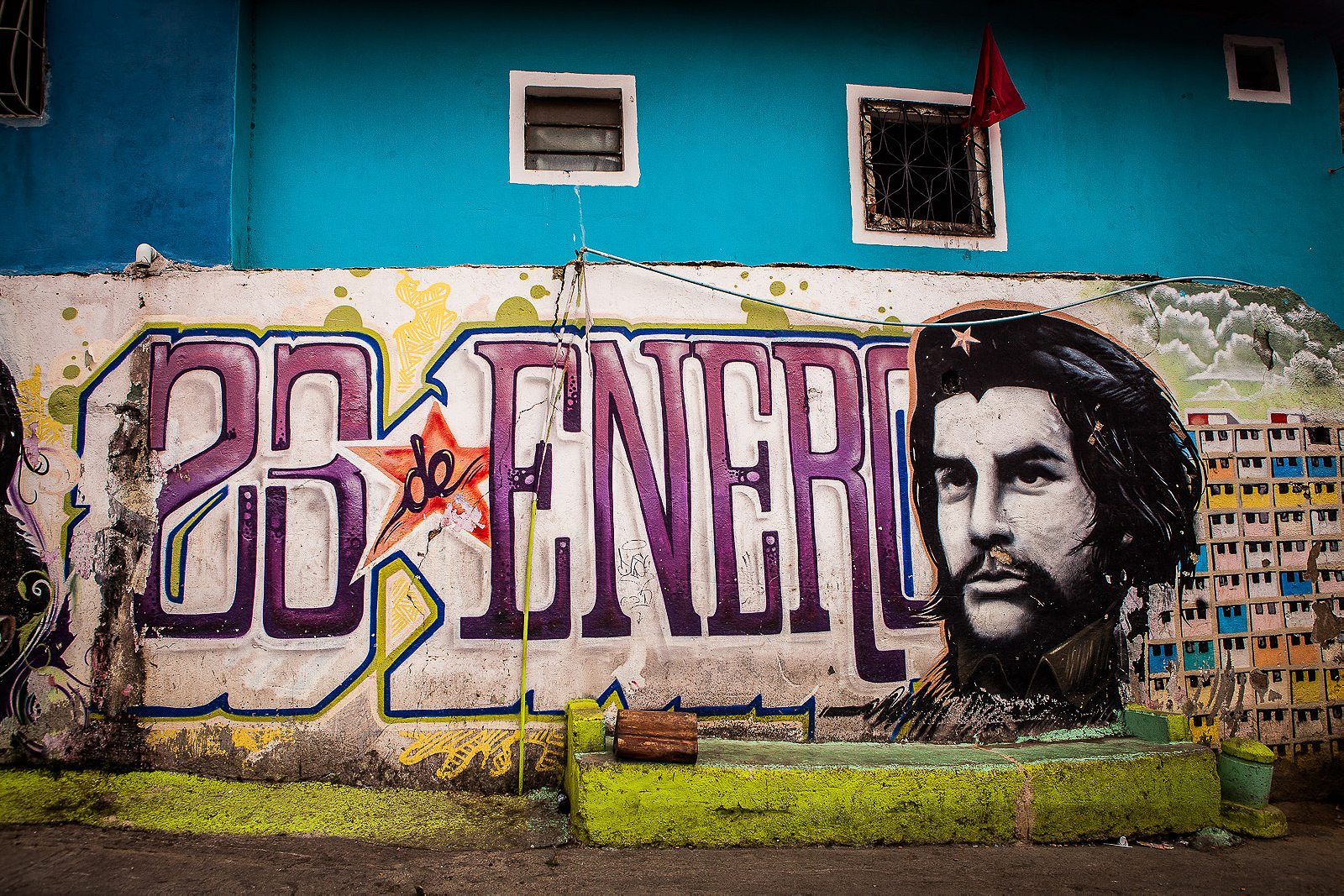
It was a bad experience, but surely it won’t be the last in what I hope will be a long career. I was glad in the end that I managed to leave basically unhurt and with my camera. This morning I got a call from the chapel guardian. With the help of some friends in the militias, she got my cards back. I went to pick them up; they were all erased, so no photos. The photoessay published here is incomplete: it’s just the photos I took in the days before the militia erased my cards.
This is not a horror story, though at some points I did think it could end really badly; there’s so much killing in the trigger-happy society that is Venezuela. The strangest thing in the end was to see the army and armed militias hanging out together. Instead of trying to stop them, the military legitimized the militias with their presence. It’s a window into why even the people who want change in this country are afraid of what might happen when it comes. Change will not be a peaceful process. There are too many armed man who seem like they would be quite happy to kill for their revolution. It reminds me of a banner I saw during the last elections here in Caracas, ‘Con Chávez todo, sin Chávez plomo‘: With Chávez, Everything. Without Chávez, Bullets.
Photographer Eduardo Leal was born in Portugal and is currently based in London. He has previously reported from Venezuela for Roads & Kingdoms on the communal councils of Caracas and on the Chavista fashion at Chávez’s funeral. See more of his work on his site or follow him on Twitter: @EduardoLeal80.

